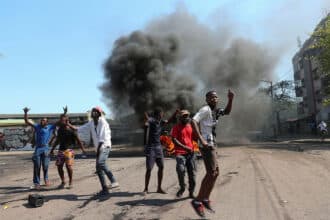On Wednesday this week, Botswana government received 141 bulls and 21 heifers from the United states of America to boost the country’s revised artificial insemination programme.
Despite the country being known for its best beef, especially in the European Union countries, who are the main importers of Botswana beef, farmers have generally expressed appreciation at the prospect of raising American breeds in their kraals.
Many farmers in Ngamiland say the import of cattle is a positive move in improving cattle ranching in their region.
“No words can express my gratitude, If it wasn’t for poor health I would have travelled to Gaborone to personally see them arrive. If president Masisi was here I would just lift him with my arms to demonstrate my joy at this moment,” noted one of the popular cattle baron in Maun, Edward Sekeletu of Hainaveld farms.
A cattle rancher rancher of note for many years said that he is among farmers who work closely with animal Health and Production department in the Ministry of Agriculture, because he strives to rear the best breed.
“As we speak my cans that I use to store cattle semen are in Ramatlabama because I believe in artificial insemination. I have no doubt that the newly imported bulls from overseas will improve what we already have locally and I am very excited. Without a doubt I will have the semen very soon,” added Sekeletu who at the time of the interview was busy at the farm helping farm helpers to castrate some of his cattle.
For another rancher, Tiro Modisaemang who doubles as chairperson for Hainaveld Farmer’s Association, the new breed will surely bring positive change in the Ngamiland cattle ranches, “We in Ngamiland also hope to receive bulls, if not semen. As you know Ngamiland is vast but also have plenty of roaming wildlife so it would be sad to get such a big animal and next thing it is killed and eaten by lions. That is why my best bet would be on semen because that way we will get to breed our herds within a reasonable time and in a controlled manner.”
Modisaemang further explained that cattle ranching in Ngamiland faces many challenges including animal diseases such as foot and mouth among others, and attacks from wild animals especially lions as the ranching areas are surrounded by game farms and reserves.
“Once cattle are brought to Ngamiland which is a red zone, they will be here to stay or until they die, another thing is we have lions coming from CKGR which eat animals in Hainaveld farms,” further explained Modisaemang.
Just as Sekeletu, Modisaemang is of the view that the government’s effort is worth celebrating as it marks a historical moment in agriculture and cattle ranching records, “I truly appreciate the team from ministry of Agriculture who advised president Masisi to do this.”
However trying to get comment from Gantsi farmers was not so successful with some of them completely refusing to comment on the matter except if they are to speak off the record. One of them simply said, “I have not seen the cattle so I cannot comment when I have not made any observation on the animals.”







